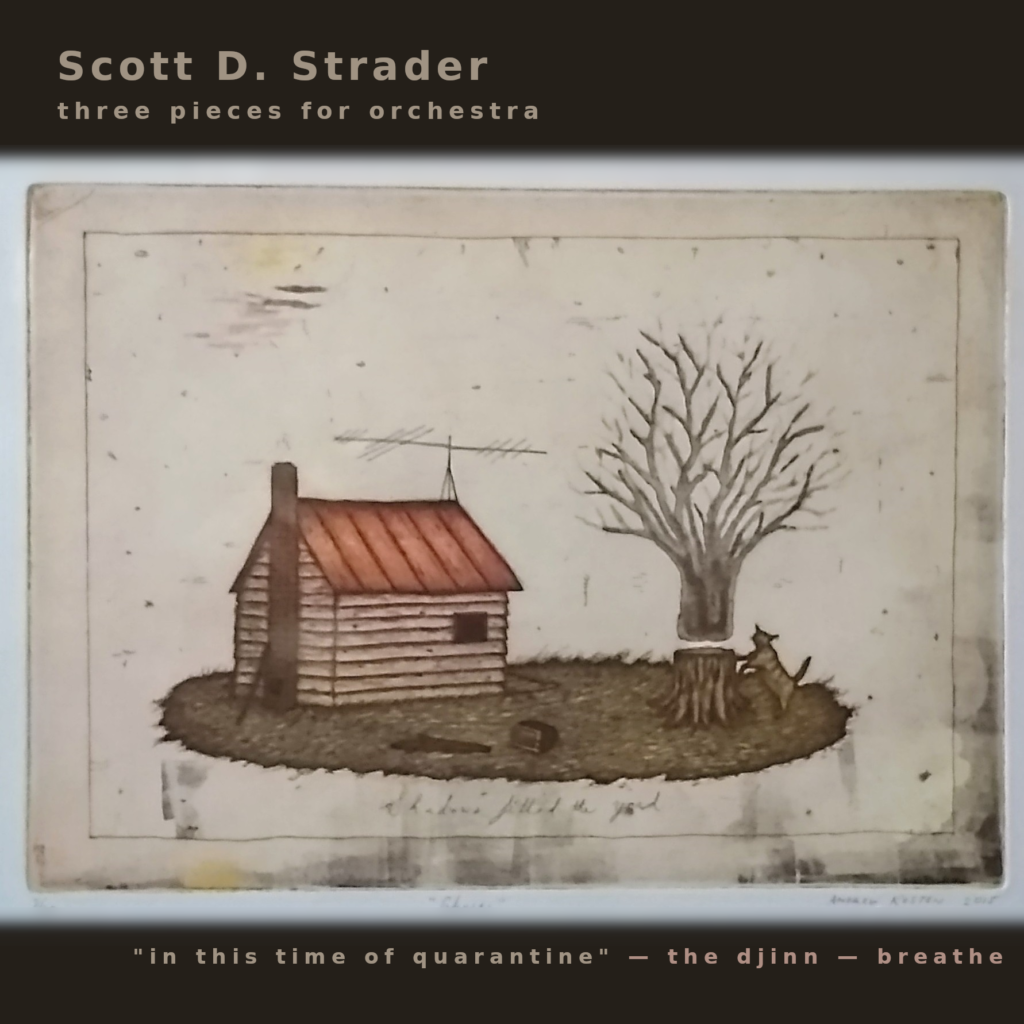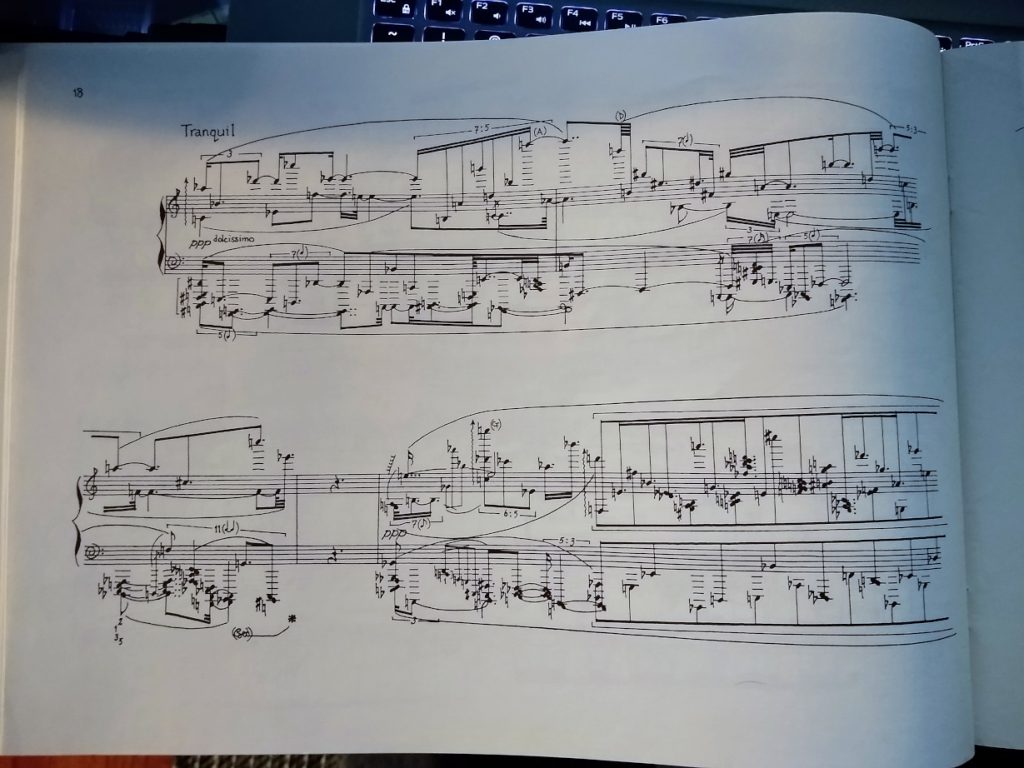
Audio exported from MuseScore:
Score exported from MuseScore:
three-pieces-for-orchestraAudio mixed and exported from Dorico (14 May 2021):
Audio uploaded to YouTube with cover art (15 May 2021):
- “in this time of quarantine”
- the djinn
- breathe
The first one comes from a comment someone had made on Twitter that, though simple enough, felt resonant when given its own context. It stuck with me unexpectedly so I never bookmarked the source. The second is from a parable by Howard Taylor (which I referenced here a few weeks ago) regarding the cost of our responsibility to others. The last is both a hopeful and not hopeful outcome.
After obsessively listening to the New Complexity pieces, I realized that I haven’t gone far enough into the atonal world. Although much of New Complexity is tonal-ish, the extreme range was creatively inspiring and I tried to go as far as I could with that approach for “quarantine”. That section is also a stretch towards the “tapestry of sound” described by Piston for when many simultaneous voices work with drastic melodic contrast. It’s our unnerved disbelief at what we’re in right now, responding with nervous laughter. That moves on to a piece, “the djinn”, emphasizing primarily rhythmic contrast across voices. It’s the destructive, will-less bouncing of contagion. Finally to a harmonic/rhythmic consonance, but that’s ultimately bruised by what occurred previously.
(This is exported from Musescore and I’m working on the cleanup in Dorico.)
Updated 30 min later: Speaking of New Complexity, I just picked up the mail and my copy of Finnissy’s English Country-Tunes was delivered. (Pic added below.)
